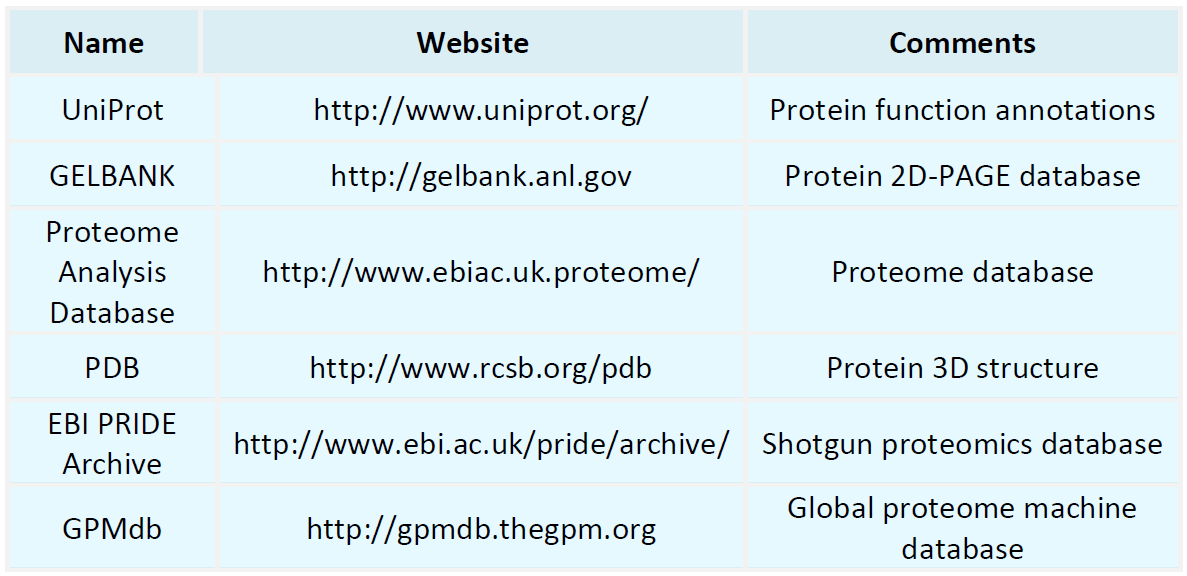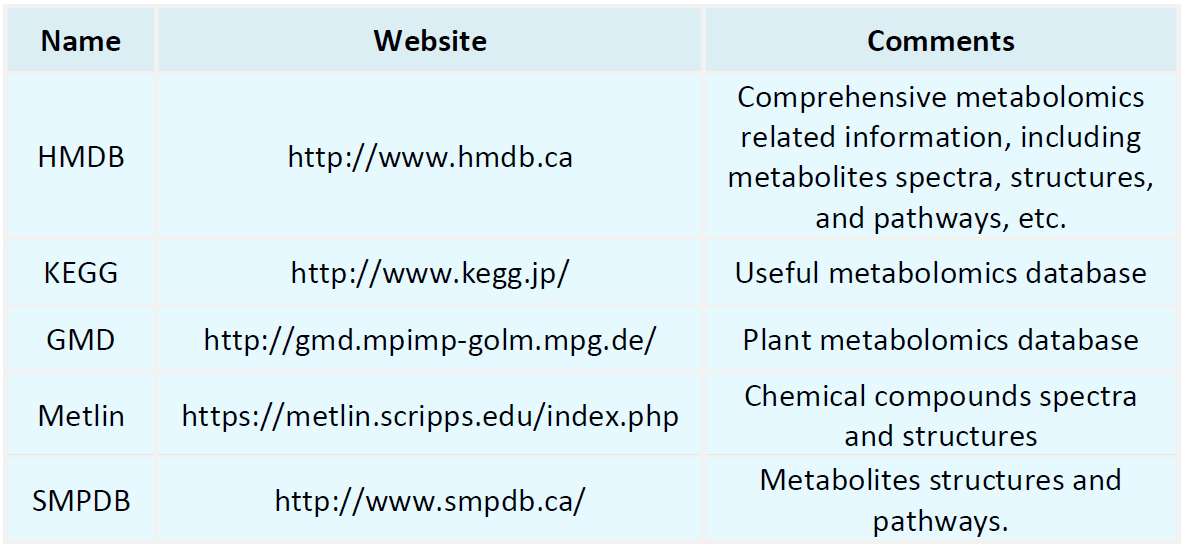Resources
Proteomics Databases

Metabolomics Databases

-
• Mass Spectrometry High Throughput Screening
Mass spectrometry high throughput screening is an analytical approach that leverages mass spectrometry to rapidly identify and quantify compounds within complex biological matrices, without the need for prior separation. This technique plays a crucial role in enabling precise, high-throughput molecular analysis directly from biological samples. In the pharmaceutical industry, it is frequently employed to screen thousands of candidate compounds to identify those with potential therapeutic efficacy. B......
-
Mass spectrometry (MS) is an analytical technique used to determine the molecular mass and structural characteristics of compounds within a sample. By analyzing the mass-to-charge ratio (m/z) and relative abundance of ionized molecules, mass spectrometry (MS) enables the identification of diverse compounds, quantitative assessment of sample components, and elucidation of molecular structures. This technique is widely applied across multiple disciplines, including chemistry, biology, pharmaceutical dev......
-
• Full Name of MS/MS (Tandem Mass Spectrometry)
MS/MS (Tandem Mass Spectrometry), also referred to as MS2, is a powerful analytical technique widely used for structural elucidation of molecules. In this method, molecules are first ionized and separated based on their mass-to-charge ratio (m/z) in the first stage of mass spectrometry (MS1). Selected precursor ions are then further fragmented in a second mass spectrometry stage (MS2 or MS/MS), enabling detailed structural analysis of the original compound. The core workflow of MS/MS (Tandem Mass Sp......
-
Host cell DNA analysis refers to the detection and evaluation of DNA present in host cells using a variety of analytical techniques. This process is of critical importance in the biopharmaceutical industry, as host cells typically refer to cell lines used in the production of biologics, such as CHO cells and E. coli. During the manufacturing process, residual DNA fragments from these cell lines may remain in the final product. If not effectively detected and removed, these contaminants can compromise ......
-
PROTAC drug discovery represents an innovative approach to therapeutic development that leverages the technology of proteolysis-targeting chimeras (PROTACs) to achieve targeted protein degradation. A PROTAC molecule typically consists of two functional ligands: one specifically binds to the target protein, while the other recruits an E3 ubiquitin ligase. These ligands are connected via an appropriate linker, forming a bifunctional molecule that facilitates ubiquitination and subsequent proteasomal deg......
-
10x BCR sequencing is an advanced genomic technology specifically designed to investigate the complexity and dynamic changes of B cell receptors (BCRs). BCRs are essential components of the human immune system, responsible for recognizing and binding to foreign antigens, thereby initiating immune responses. By leveraging 10x BCR sequencing, researchers can gain in-depth insights into the processes of BCR gene recombination and somatic hypermutation, revealing how individual immune systems adapt to and......
-
• De Novo Transcriptome Analysis
De novo transcriptome analysis is a powerful approach for comprehensively profiling the transcriptome of organisms, particularly those lacking fully sequenced or annotated genomes. This technique enables researchers to capture the full spectrum of RNA molecules expressed under specific conditions, facilitating the elucidation of complex gene expression patterns and regulatory networks. One of the key applications of de novo transcriptome analysis lies in gene discovery and functional annotation in n......
-
• Single Cell Transcriptome Sequencing in Cancer and Neuroscience Research
Single cell transcriptome sequencing is a powerful technique used to analyze gene expression profiles at the resolution of individual cells. It plays a vital role in modern biological research by revealing the molecular characteristics of cells under different physiological conditions. Its applications are particularly prominent in cancer research, where tumors are often composed of heterogeneous cell populations exhibiting distinct gene expression patterns and functional profiles. Single cell transcr......
-
10x TCR sequencing is a cutting-edge technology designed to comprehensively profile the diversity and complexity of T cell receptors (TCRs). TCRs are protein complexes expressed on the surface of T cells, responsible for recognizing foreign antigens and initiating immune responses. Each T cell harbors a unique TCR sequence, and this diversity is a critical feature enabling the immune system to effectively detect and eliminate a wide array of pathogens. 10x TCR sequencing plays an essential role in bot......
-
• Single Cell RNA Sequencing Technology
Single cell RNA sequencing technology (scRNA-seq) has emerged as a pivotal tool in biomedical research, with wide-ranging applications in oncology, neuroscience, immunology, and developmental biology. In cancer research, scRNA-seq enables the identification of tumor heterogeneity, uncovering the molecular signatures of distinct cancer subtypes and informing the development of personalized treatment strategies. In neuroscience, the technology allows for the exploration of neuronal diversity and charact......
How to order?







